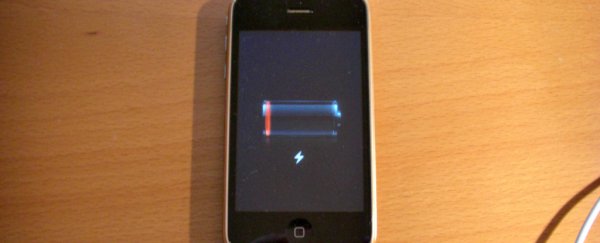Researchers have discovered a new way of creating more efficient supercapacitors - a type of technology that could replace batteries to charge your phone in a matter of seconds.
Supercapacitors release energy in large bursts, and have incredible potential when it comes to powering our technology. The problem is they don't store as much energy as batteries - but this new manufacturing technique could soon change all that.
"If they were to replace the batteries with these supercapacitors, you could charge your mobile phone in a few seconds and you wouldn't need to charge it again for over a week," said one of the researchers, Nitin Choudhary, from the University of Central Florida.
Right now, a supercapacitor that could store as much power as a lithium-ion battery would be much larger than what could fit in a standard phone.
But by coming up with a new way of attaching two-dimensional nanomaterials to supercapacitors, researchers have created supercapacitors that are a lot smaller, lighter, and more flexible - and with even more storage capability.
These supercapacitors would also stop the 'old phone dying fast' problem, where phones hold less and less charge after 18 months or so as the battery begins to degrade.
For perspective, current lithium-ion batteries can generally be recharged less than 1,500 times without much degradation, but these new supercapacitors can be recharged more than 30,000 times without degrading.
This isn't the first time scientists have attempted to use nanomaterials to boost supercapacitors - it's something researchers have been working on for years.
But in the past, teams have struggled to effectively merge the materials.
"There have been problems in the way people incorporate these two-dimensional materials into the existing systems - that's been a bottleneck in the field," said lead researcher Yeonwoong 'Eric' Jung.
Instead, Jung and his team used a simple chemical synthesis approach to integrate the supercapacitor with two-dimensional materials that boost its efficiency.
Using this technique, the new supercapacitors are composed of millions of nanometre-thick wires coated with shells of two-dimensional materials.
If you imagine it like a coated wire, the core facilitates the super-fast charging and discharging that makes supercapacitors so powerful, and the two-dimensional coating is what delivers the energy storage ability.
 University of Central Florida
University of Central Florida
"For small electronic devices, our materials are surpassing the conventional ones worldwide in terms of energy density, power density, and cyclic stability," said Choudhary.
While the potential for our phones is exciting (because who can get through a day without charging anymore?), if the team can make these supercapacitors even more efficient, it could also help to revolutionise electric vehicles.
Right now, electric cars are great, but even the most efficient models have to rely on heavy, slow-charging batteries.
If those batteries were replaced with equally efficient supercapacitors, they could be charged in seconds, and would be much lighter.
This new method hasn't reached that level just yet, but the team says that it has the potential to be tweaked further.
"It's not ready for commercialisation," said Jung. "But this is a proof-of-concept demonstration, and our studies show there are very high impacts for many technologies."
The team is now working on patenting the technique. Their work has been published in ACS Nano.
